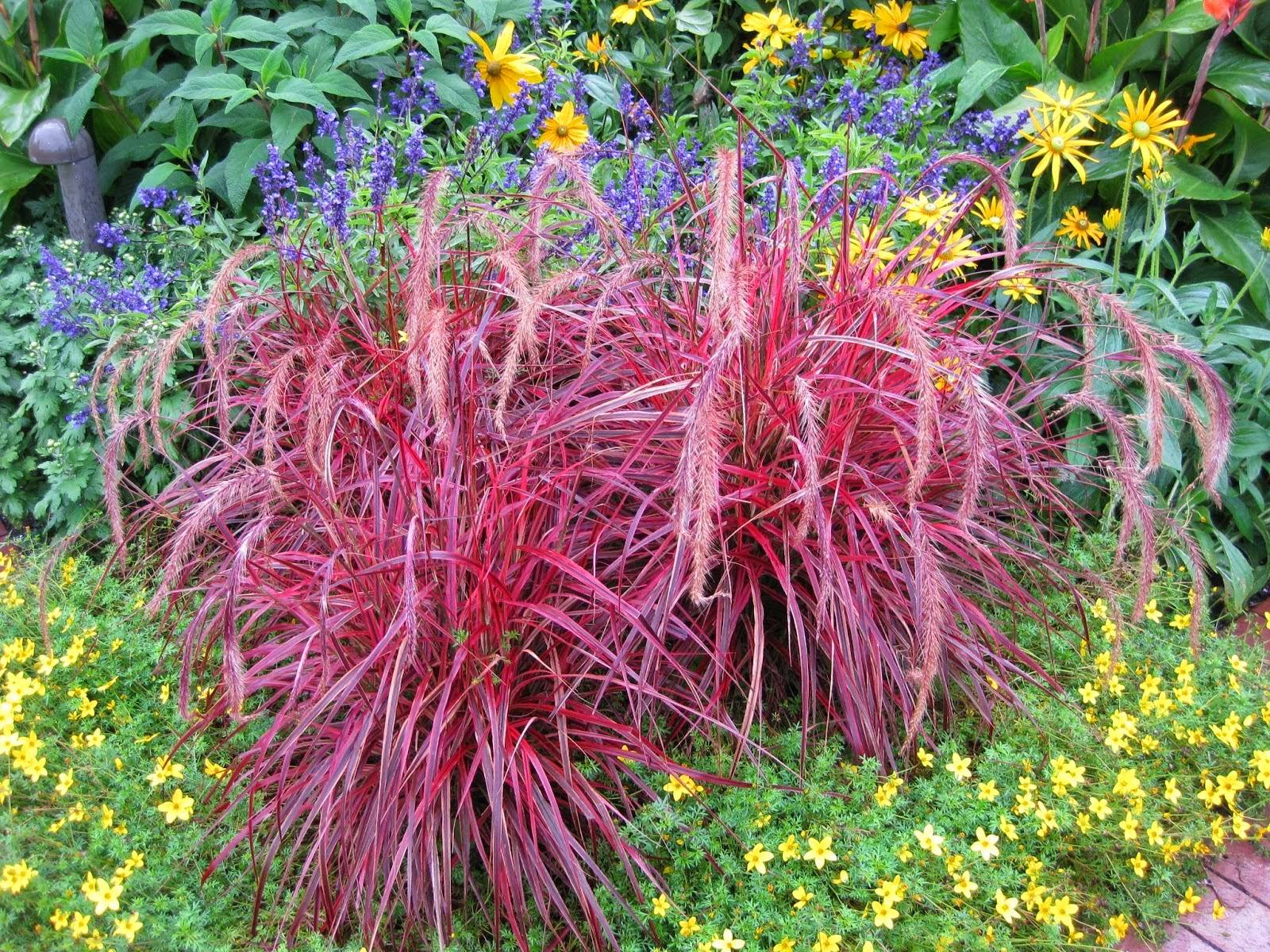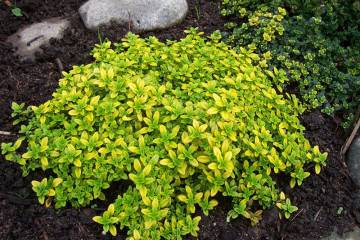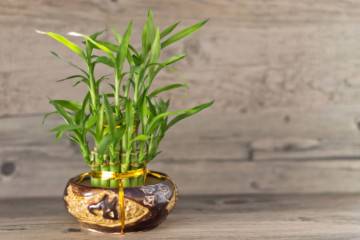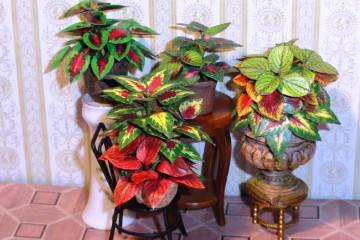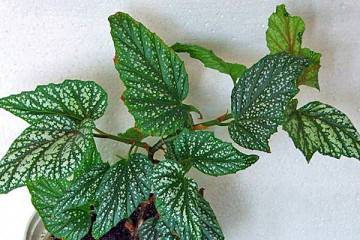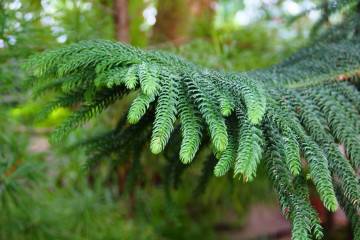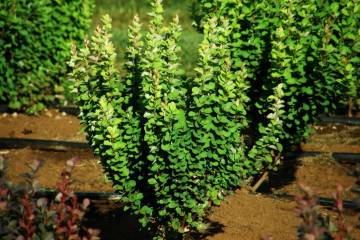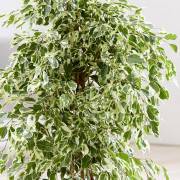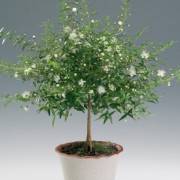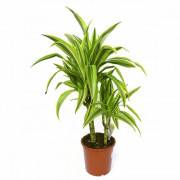Pennisetum foxtail (Pennisetum alopecuroides) - planting and care
Content:
Pennisetum is a thermophilic plant that grows in the wild mainly in North America, Africa, Australia and Asia. Thanks to the fluffy spikelets and the bright color of the leaves, the flower attracted the attention of flower growers and began to be grown in summer cottages, and also used as an element of landscape design.
Botanical description of the foxtail pennisetum
A plant native to Africa, since ancient times, it has had an important nutritional value for different peoples: Africans, Indians, Americans used the grain of pennisetum for making flour, and also grew up for livestock feed. From the 19th century. people began to use the decorative functions of the flower, including it in plant compositions when decorating parks and gardens.
Pennisetum, also called pinnacle, is a perennial plant in the cereal family with about 150 varieties. Of the whole variety, only about 10 species are grown for decorative purposes. The most popular is the fox-tailed pinnacle (Pennisetum alopecuroides), which is distinguished by its unpretentiousness and resistance to frost. The plant has straight or arcuate stems, leaves up to a meter in length, as well as bright red and burgundy inflorescences - spike-shaped panicles located at the end of the stems (some varieties have white-pink spikelets).
Pennisetum flower: description of ornamental species
In addition to foxtail, the following species can be found in gardens and parks:
- Eastern (Pennisetum oriental).
Due to the low frost resistance of the oriental pennisetum, the flower in Russia is cultivated as an annual. Narrow leaves (0.4 cm) lean towards the ground. Violet-pink inflorescences with 2.7 cm bristles reach 5-15 cm in length.
- Shaggy (Pennisetum villosum).
Due to its poor winter hardiness, the shaggy pennisetum is grown as an annual. Low bushes (0.3-0.6 m) have narrow leaves half a centimeter wide and 3-10 cm fluffy golden inflorescences.
- Bristly (Pennisetum setaceum).
The plant is afraid of the cold, therefore it is grown in mid-latitudes as an annual. The height of the flower reaches 1.5 m. Pennisetum bristly has a thick “head” of thin stems and narrow (5 mm) leaves with a burgundy hue; The 40-centimeter spikelets are colored dark pink.
The most common varieties of this variety are Pennisetum Rubrum, Red Head and Hameln.
- Simple (Pennisetum incomptum).
One of the most unpretentious varieties, capable of withstanding 30-degree frosts. Pennisetum simple has a long rhizome (up to 1.3 m) and gray-green leaves. Depending on the period of the year, the inflorescences are colored pale green, almost white and brownish yellow.
- Gray (Pennisetum glaucum).
The plant has erect stems and leaves 4 cm wide.The height of dense bushes can be 1.5-2 m.Dark pink inflorescences 0.15-0.35 m long appear in mid-July. Pennisetum gray is used in cooking and folk medicine.
Popular varieties include Purple Majesty, Fantastic Foliage, and Jade Princess.
Pennisetum foxtail: planting and care in the garden
The plant is unpretentious and does not require much effort in the process of planting and care.
It is planted in areas open to the sun, the flower feels good near fences and fences.
Watering
Only necessary in dry times: too frequent will lead to stem rot.
Spraying
The flower does not need additional moisture.
Priming
The universal soil for cereals is selected with the addition of ash and peat. The earth should be slightly acidic and light. From time to time, weeding and loosening of the earth around the bush is required.
Top dressing
If there is a lack of nutrients in the soil, it is necessary to carry out monthly feeding with minerals (Crystalon, Ammophos, Kemira, etc.) and organic matter (manure).
Wintering of foxtail pennisetum
The plant is perennial, for the winter it is provided with shelter: the place around the bush is covered with dry leaves or spruce branches. The ground part is not cut off, since it protects the roots from freezing. In the spring, the shelter is removed, last year's stems and leaves are cut off.
Blooming pinnacle
The time of appearance of inflorescences, shape and color depend on the type of plant. The panicles of the cereal are covered with villi, which makes it seem airy.
| Variety of penissetum | Flowering time | Characteristics of inflorescences |
| Fox tail | low-growing varieties begin to bloom in mid-July, tall ones - in August | inflorescences of light brown, reddish-brown, burgundy, violet-red, white and other colors, resemble brushes. |
| Oriental | from July to September | the length of the pinkish-violet panicle is 4-15 cm with bristles up to 2.7 cm. |
| Shaggy | August | golden fluffy panicles 3-10 cm long have 50 mm bristles, inflorescences descend to the ground. |
| Plain | from June to September | at first, the inflorescences are green, eventually change color to yellow-brown. |
| Bristly | from July to August | the length of the inflorescences is in the range of 15-35 cm, the color is pink and purple, the bristles are about 4 cm. |
| Gray | from July to August | inflorescences are painted in red-burgundy color |
How to grow pinnacle with seeds
Cultivation of foxtail pennisetum, like other varieties, is carried out in two ways: by dividing the bush and by seeds (when using the latter, the characteristics of the parent variety may not be preserved).
Growing seedlings from seeds
Seeds for seedlings of annual varieties are sown in March-April. The landing looks like this:
- Substrate (peat with sand) is poured into containers with drainage holes in equal parts and moistened.
- Seeds (no more than 2) are evenly placed in the ground (depth 3-4 mm), the soil is sprayed with warm water.
- The pots are removed in a lighted, warm place.
- After the seedlings appear (after 7-14 days), their regular watering, as well as artificial lighting, is organized.
- When the plants reach 10-15 cm, they are planted in open ground. The favorable period is the end of May - the beginning of June (depending on the region).
Plants are planted at a distance of 60-70 cm from each other.
If you plan to propagate a perennial plant by seeds, sowing seedlings should be done in February; in this case, flowering can be expected already this year.
Sowing seeds in the area
In warm areas, it is allowed to sow annual seeds directly into open ground (in May).The technology looks like this:
- Dig up and level the ground.
- The seeds are scattered and buried with a rake.
- Watering.
- When shoots appear, a part is removed (the distance between shoots should be 70-80 cm).
Reproduction by dividing the bush
By dividing the bush, perennial grasses multiply. The process is carried out in the spring 1 time in 5 years. The leaves and stems located in the center of the green "cap" lose their beautiful appearance over the years, so they should be cut out. The outer parts are divided into smaller ones and seated.
After placing in the pre-prepared grooves, the roots are lightly pressed to the ground, ensuring the stability of the plant. The transplanted bushes are watered.
Possible growing problems
Perishache is an unpretentious and rarely ailing plant. Sometimes aphids and spider mites can appear on the leaves and stems. Treatment with insecticides (Aliot, Fitoverm, etc.) will get rid of pests.
Emptiness, yellow or red spots on greenery indicate the appearance of a scale insect, in the fight against which a soap-alcohol solution will help.
Sometimes the plant suffers from frost. In this case, the affected parts of the root system must be removed and the bush transplanted.
Decorative use of the foxtail penissetum
Peristochaetum is quite actively used by landscape designers in the creation of plant compositions, especially not far from water bodies, where bushes are the background for other flowers (cauldrons, marigolds, etc.).
The cereal is ideal for forming living curbs and is a wonderful framing of park paths.
Together with lavender, stone rose, gray fescue and other flowers, the plant is used to form stony compositions. Summer cottages are decorated with different varieties of pinnacle, differing in shape and color.
When growing foxtail penissetum does not require much effort. It easily gets used to a new place, grows quickly and does not need watering. Due to the density of bushes and flowering almost throughout the summer, the representative of cereals is ideal for decorating summer cottages and park landscapes.
